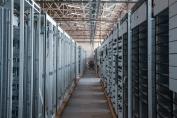Cloudflare Outage — Nov 18, 2025: Why ChatGPT, X, Spotify and Major Sites Went Down
- 18 November, 2025 / by Fosbite
Overview: What Happened on November 18, 2025?
On November 18, 2025, Cloudflare — one of the world’s largest content delivery, DNS, and edge security providers — had a broad service disruption that produced 500 Internal Server Errors and interruptions across dozens of big platforms. In plain terms: parts of the internet looked like they were asleep. Affected services included ChatGPT / OpenAI, X (formerly Twitter), Spotify, Canva, League of Legends, and even transit pages like NJ Transit. The episode is a sharp reminder that when a single edge provider stumbles, the fallout can be industry-wide.
How Cloudflare Described the Incident
Cloudflare’s initial explanation pointed to an unusual spike in traffic that overwhelmed parts of their stack. They said recovery began around 12:21 UTC but cautioned that elevated error rates could linger while mitigations finished. In some regions they temporarily scaled back features — for example disabling parts of WARP encryption or specific edge services — just to reduce load and stabilize routing. That’s a common, pragmatic move in the heat of an incident: trade features for stability.
Which Major Services Were Affected?
- ChatGPT / OpenAI: Many users saw 5xx responses and were blocked by Cloudflare’s protection layers, which effectively interrupted normal API and UI flows.
- X (Twitter): Widespread error pages and intermittent availability as requests failed at the edge.
- Streaming, Gaming & Apps: Spotify, League of Legends and various apps reported degraded performance or outages when edge routing and CDN caches misbehaved.
- Public Services: Municipal pages and NJ Transit experienced web/mobile disruptions — a neat illustration that critical public infrastructure increasingly depends on third-party edge services.
Community Signals and User Experience
On social platforms and forums users described abrupt failures: pages returning the familiar 500 Internal Server Error, blocked requests to challenges.cloudflare.com, and timeouts. From working these kinds of incidents before, the visible pain is almost always the same — login screens that never finish, blank pages, and APIs that suddenly look flaky for developers who depend on Cloudflare’s edge. The confusion ramps up fast: is it my code? my network? No — often it’s the provider in the middle.
Why This Matters: The Big Picture
This episode matters because a handful of companies now own a lot of the plumbing: DNS resolution, DDoS mitigation, TLS termination, global caching. That concentration creates systemic risk — one provider outage can cascade across industries. Quick takeaways:
- Single-provider risk: If you depend entirely on one CDN/DNS/security vendor, you’re exposed to that vendor’s downtime.
- Redundancy matters: Using multi-CDN architecture and a secondary DNS provider reduces the chance one failure brings you to a halt.
- Operational readiness: Teams should practice incident response and failover playbooks regularly, and be ready to communicate status clearly to customers.
Practical Steps for Site Owners and Developers
If your stack routes through Cloudflare (or any single edge provider), take these concrete steps to harden resilience — things that, honestly, separate teams that panic from teams that keep shipping:
- Monitor status pages: Watch Cloudflare’s official status at Cloudflare Status for live updates. Fast detection beats slow guessing.
- Implement fallbacks: Configure a secondary DNS provider and test a multi-CDN architecture so origin remains reachable if one CDN fails. Yes, it’s more configuration up front, but it saves you in situations like this.
- Cache critical pages: Use origin-level caching and stale-while-revalidate patterns to serve essential content during edge provider outages — think read-only product pages, status banners, or cached checkout forms.
- Alert users proactively: If you detect downstream edge issues, notify users via email, an alternate domain, or social channels to reduce support volume and confusion.
- Review SLAs and runbooks: Update your incident response runbooks with vendor-specific scenarios and run tabletop exercises (simulate the failover at least once a quarter).
How to Test Failover — A Quick Checklist
Practical, testable things you can run today:
- Switch DNS to your secondary provider in a staging environment and measure DNS TTL behavior.
- Route a percentage of traffic through a backup CDN and verify cache-hit ratios and origin load.
- Exercise stale-while-revalidate flows so cached pages continue to serve while the edge warms back up.
- Practice clearing local DNS cache and advise support teams on "how to clear DNS cache after Cloudflare outage" for user guidance.
Historical Context: Has Cloudflare Had Outages Before?
Yes. Earlier in 2025 (June 12) Cloudflare suffered a multi-hour disruption tied to an internal storage failure that affected Workers KV, WARP, Access, and Turnstile. They investigated and confirmed no customer data loss. The November 18 incident appears different — more about traffic spikes and edge load — but both underline how operational complexity at the edge can bite you in different ways.
FAQ
Why do I see “Please unblock challenges.cloudflare.com”?
That message shows up when Cloudflare’s challenge-response (used to filter suspicious traffic) is itself slow or misbehaving. During this outage, challenge endpoints could be timing out or returning errors, so browsers and bots get stuck on that step.
Was Cloudflare under attack?
Cloudflare’s preliminary assessment emphasized an unusual traffic spike rather than a confirmed targeted attack. That said, distinguishing between organic spikes, misconfigurations, and actual DDoS events takes time — detailed post-incident reports usually arrive later.
Are services fully restored now?
Cloudflare reported progressive recovery, but residual elevated error rates can persist as caches re-warm and routing changes propagate. If you still see errors: clear local DNS cache, try another network, or check the status page for updates. Also consider switching to your tested secondary DNS/CDN if you have one configured.
Relevant Reading and Sources
For live updates and deeper explainers, these are good starting points:
- Cloudflare Status — official incident updates and post-incident reports.
- The Verge — timely coverage of major outages like this.
- Reddit — community-sourced signals and symptom aggregation (often where "Is Cloudflare down right now?" gets asked first).
- WIRED — deeper explainers on CDN architecture and internet risk.
One Practical Hypothetical (An Example)
Picture an e-commerce site using Cloudflare for CDN and bot protection. During the outage, product pages return 500s and checkout API calls time out because they hit Cloudflare’s edge. If that company had a secondary DNS pointing to a backup CDN and a cached, read-only checkout page (stale-while-revalidate), they could keep accepting orders — degraded, sure — but avoid a full revenue stop. From experience, teams that rehearse this once a quarter handle real outages with far less panic.
Final Thoughts
Events like the November 18 outage are painful and expensive — they expose brittle dependencies. But they’re also an opportunity: tighten runbooks, demand clearer SLAs, and design with the assumption your external dependencies will fail. The smarter path is to accept that fallibility and plan for it — multi-CDN architecture, secondary DNS, cached fallbacks, and practiced failovers. That’s how you turn a platform-level surprise into a minor bump.









